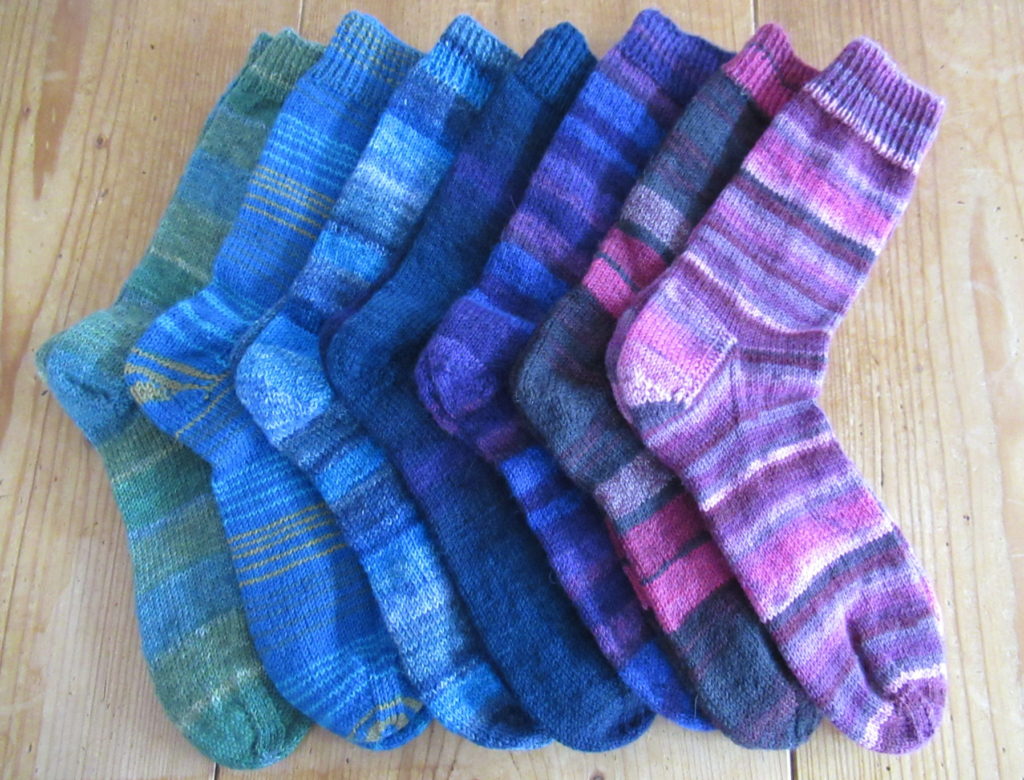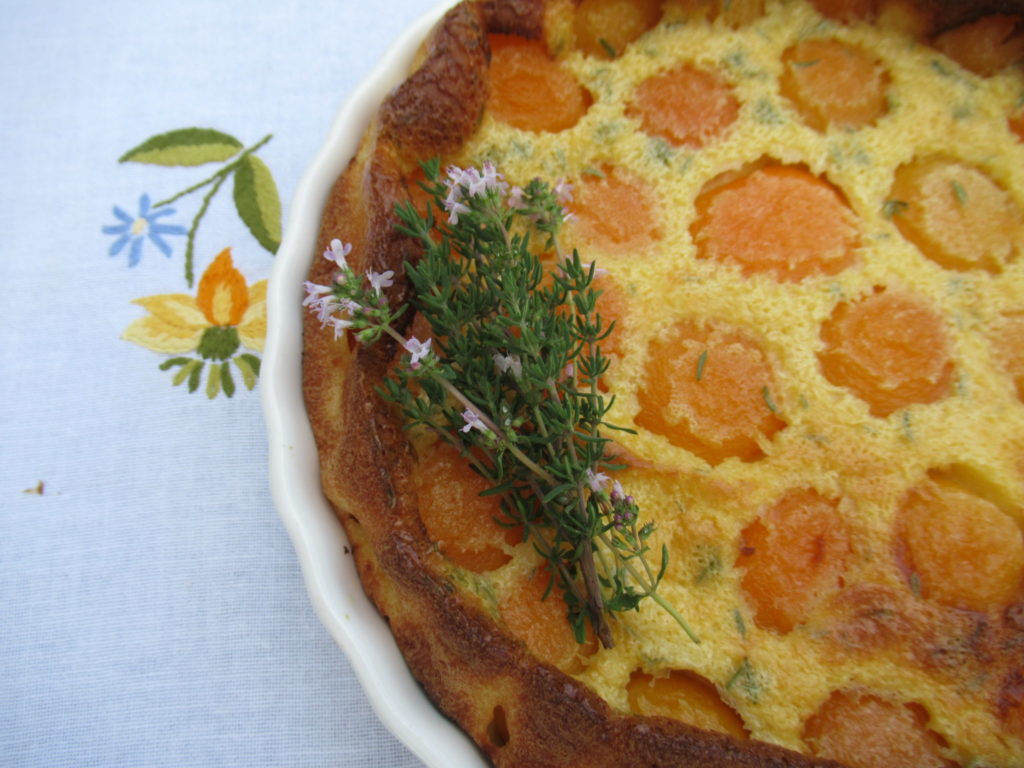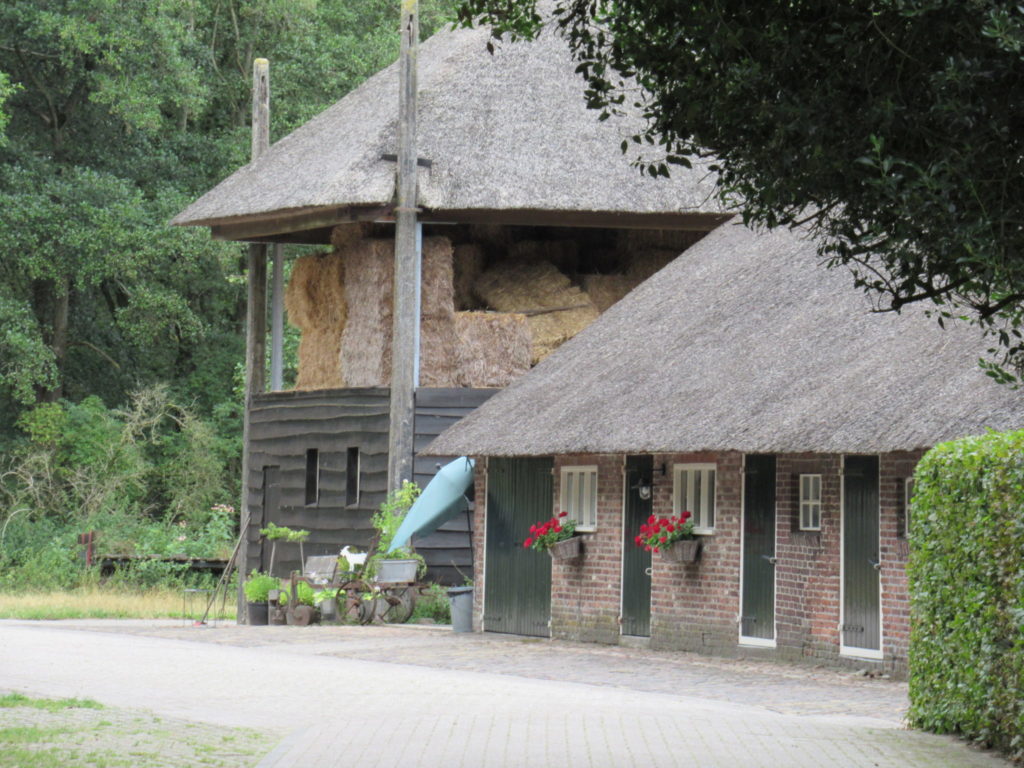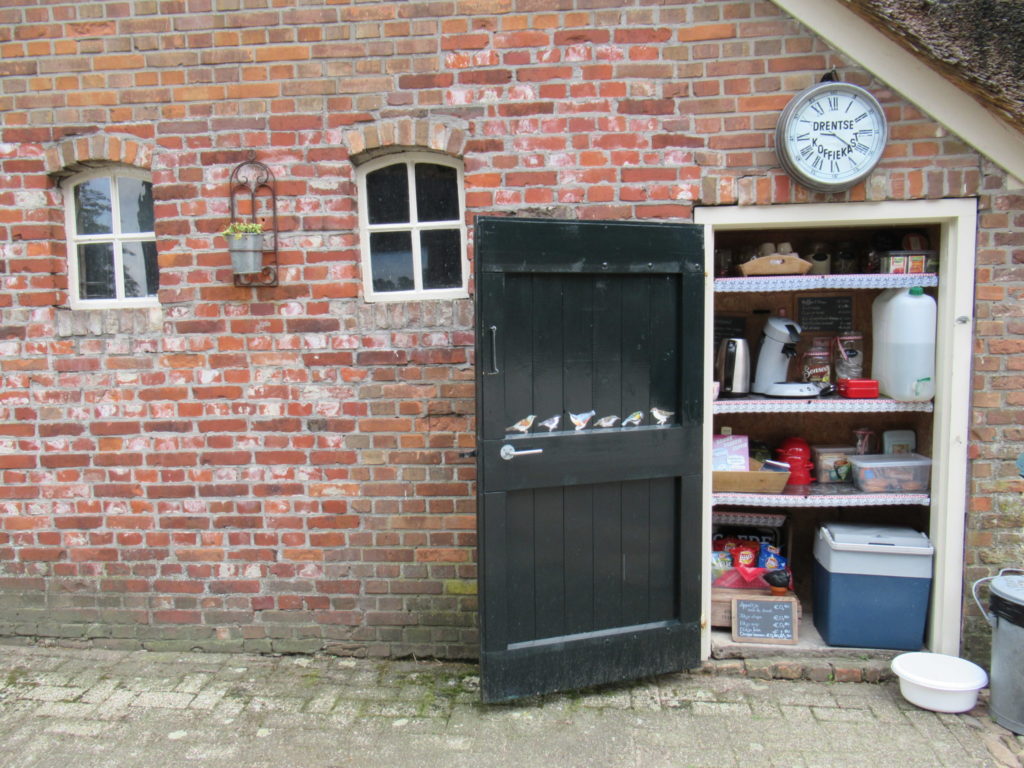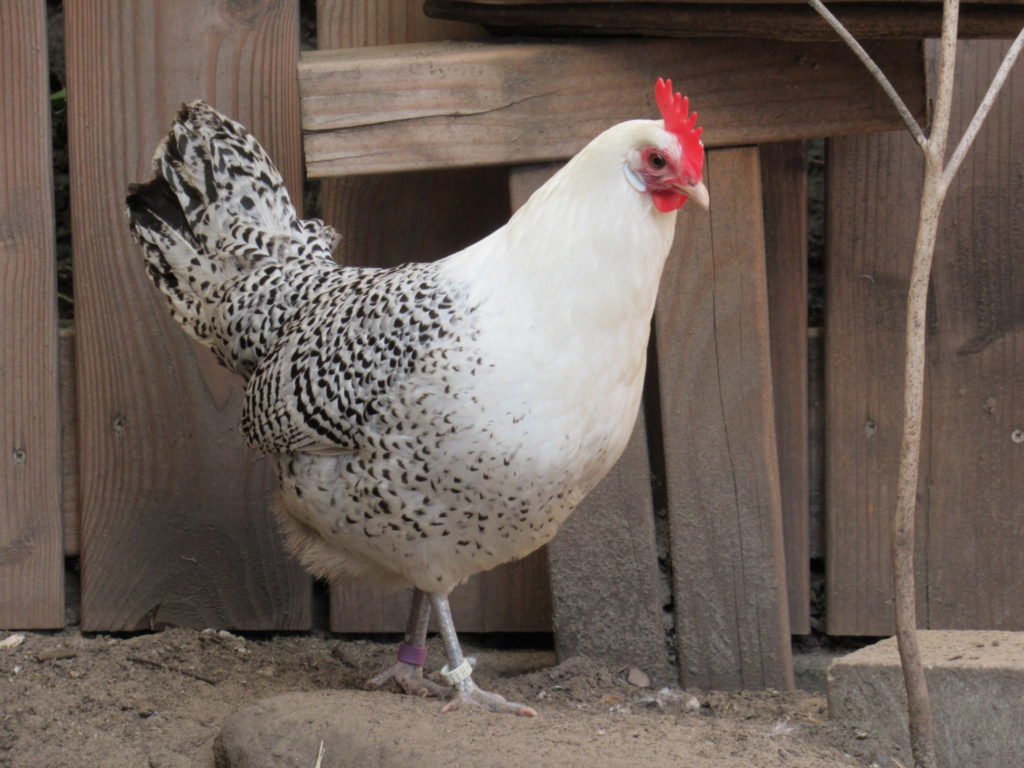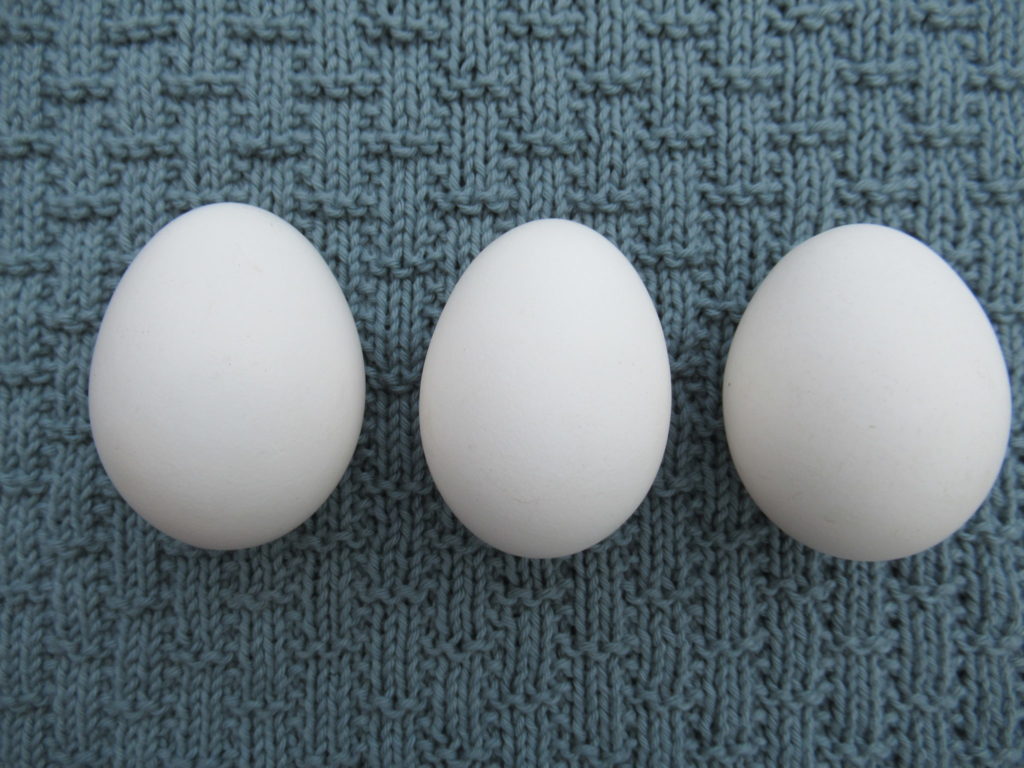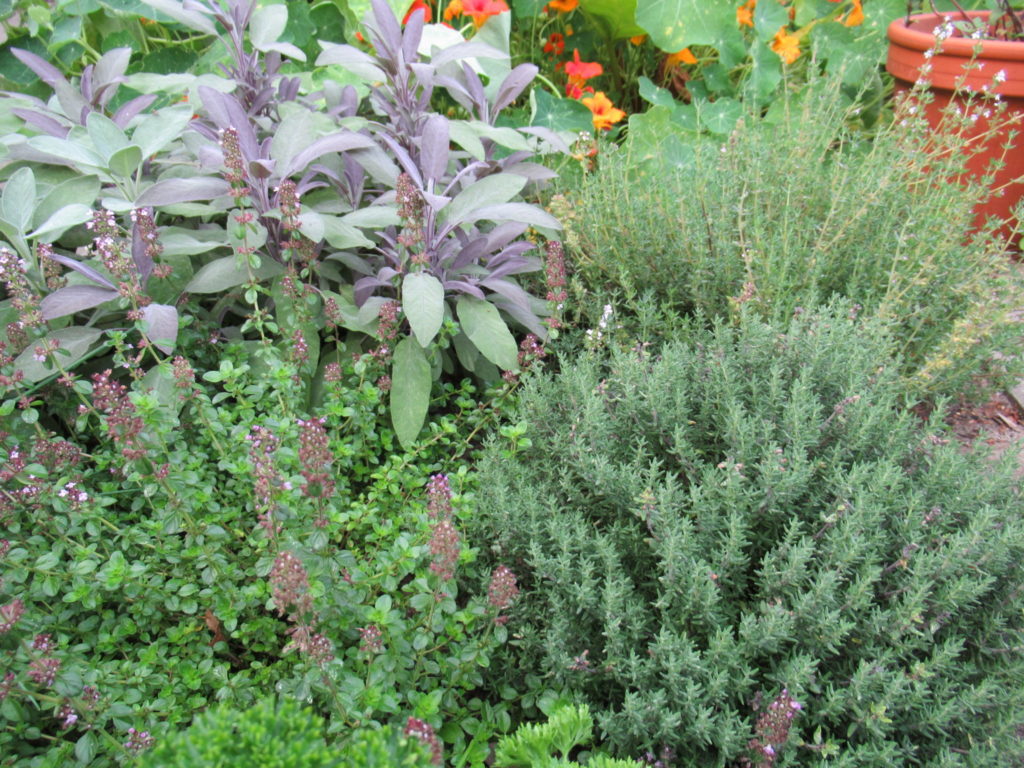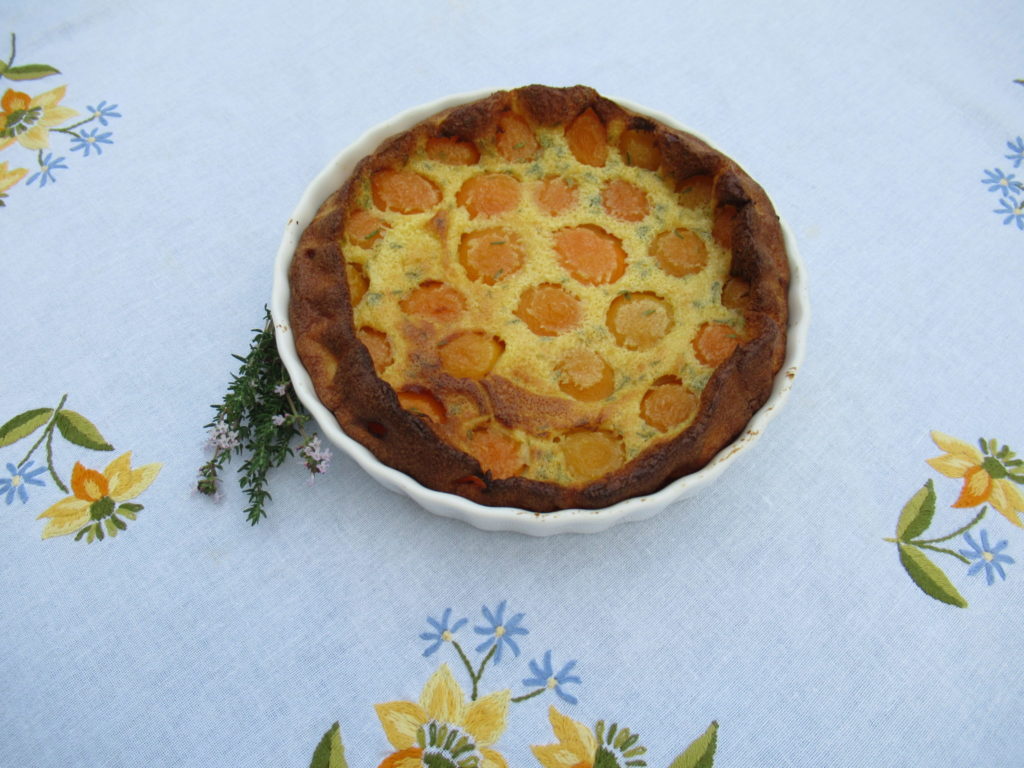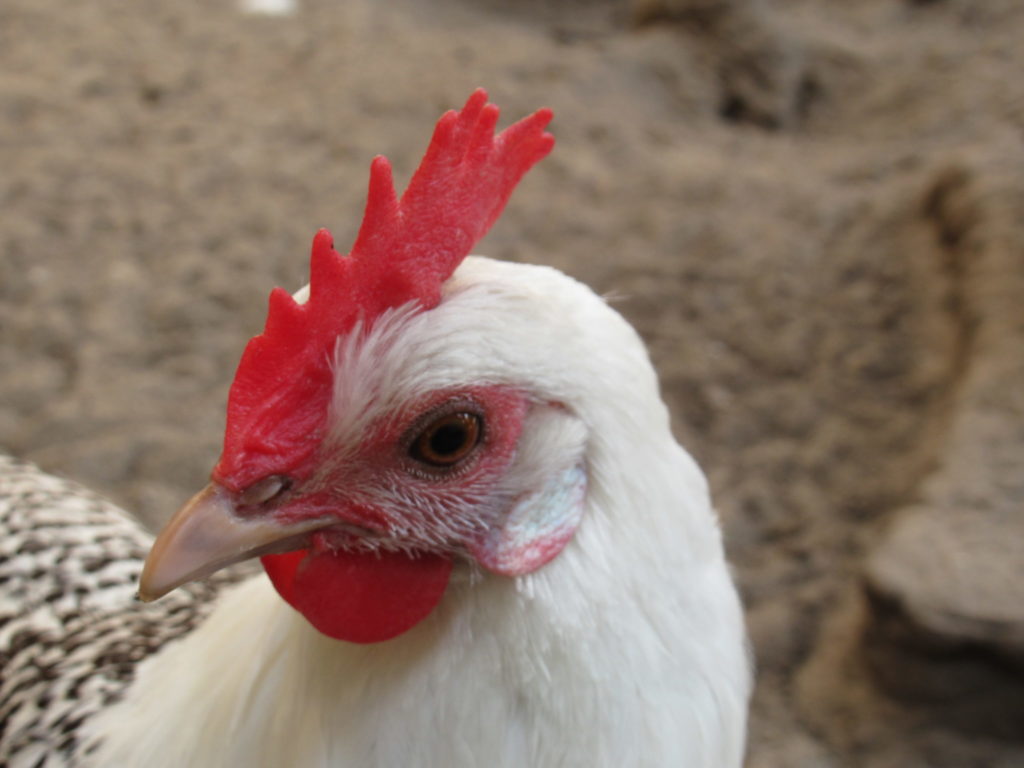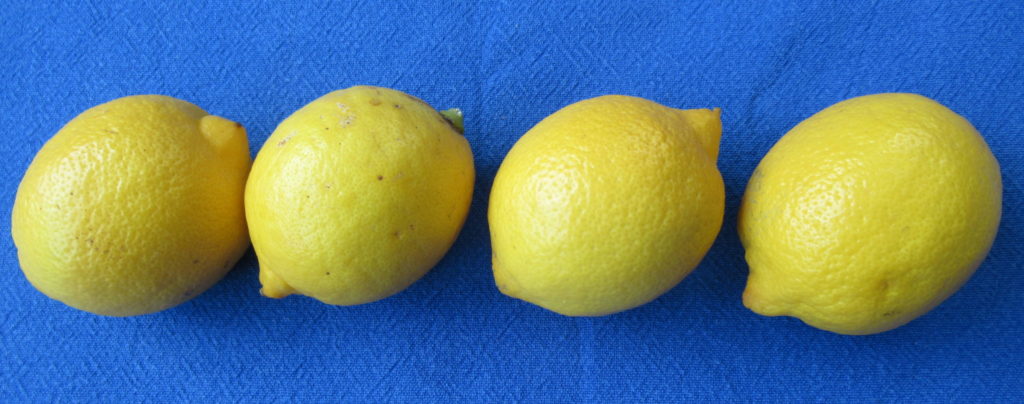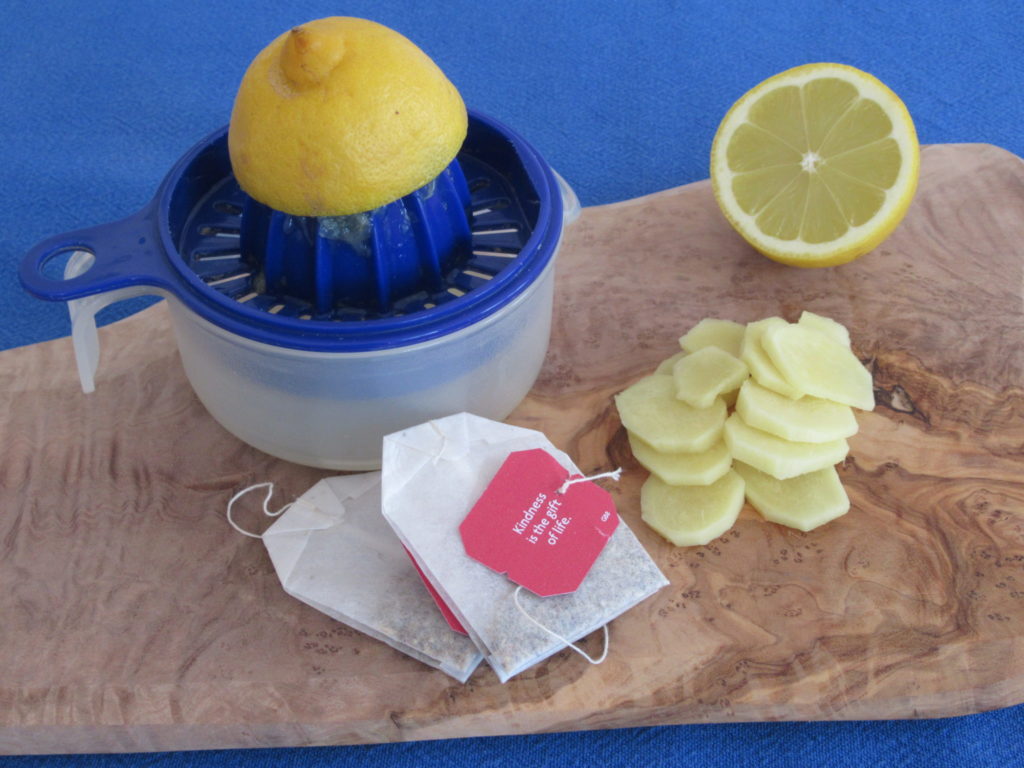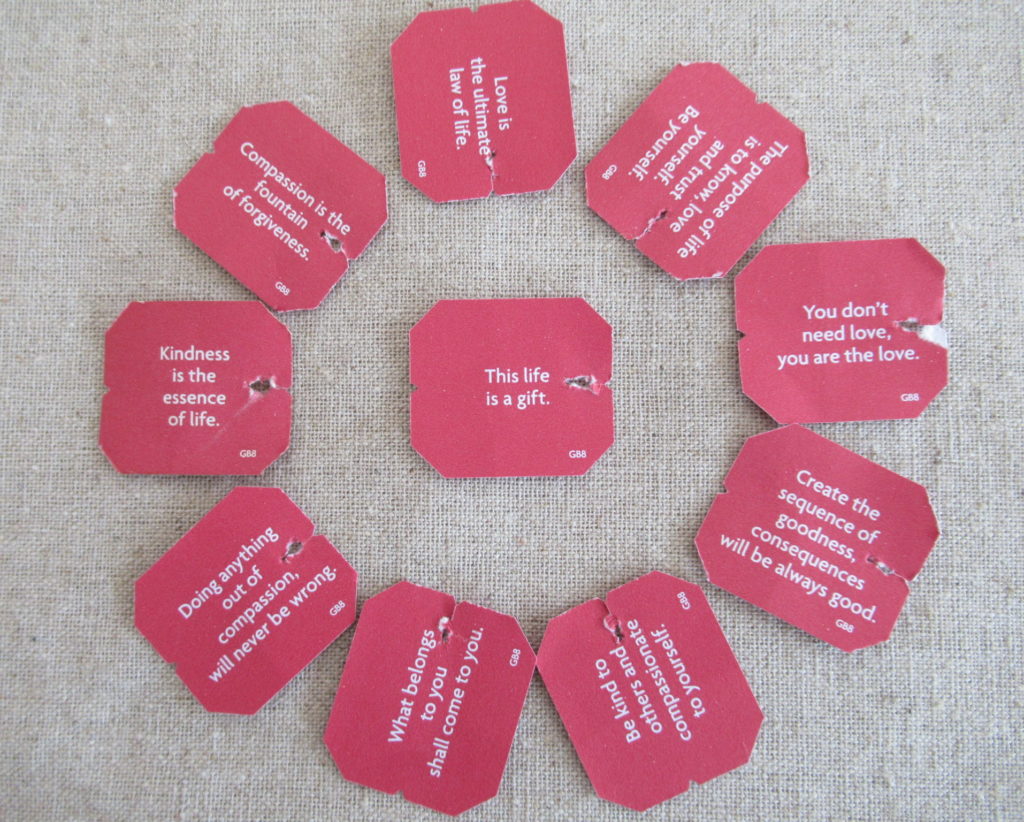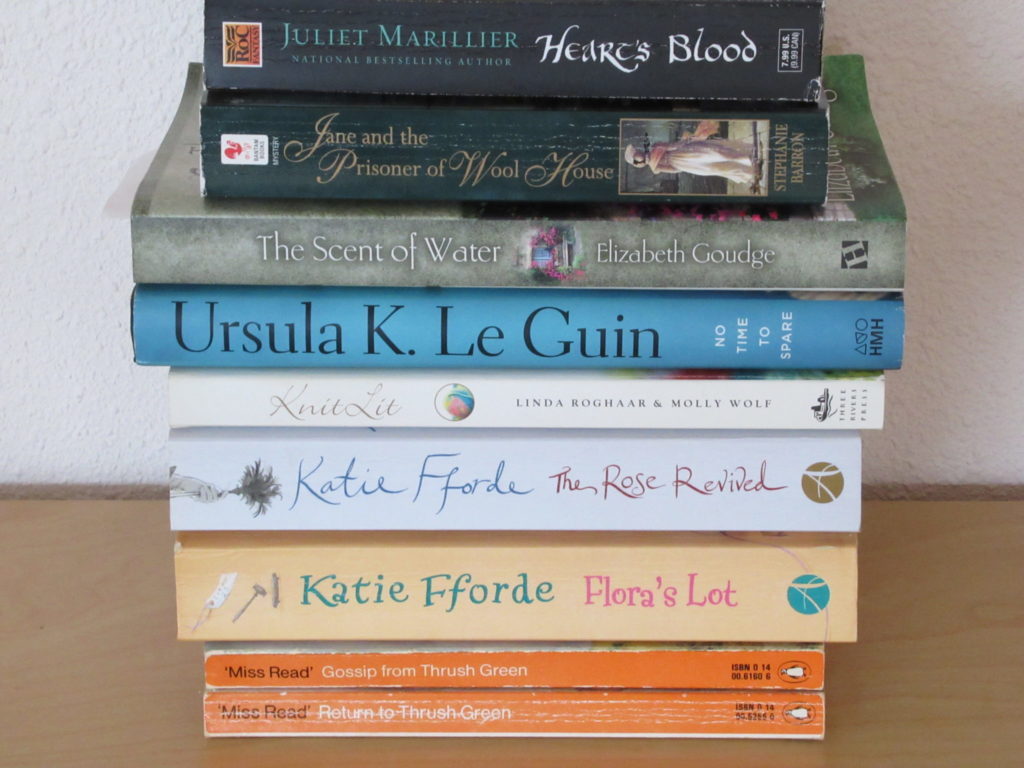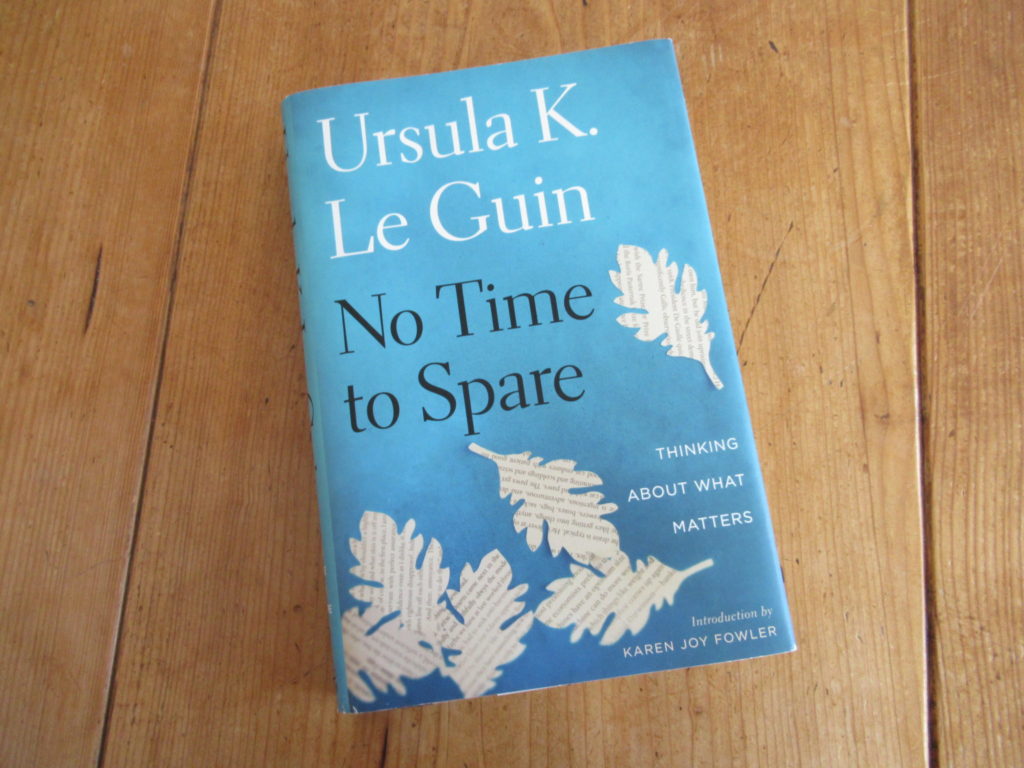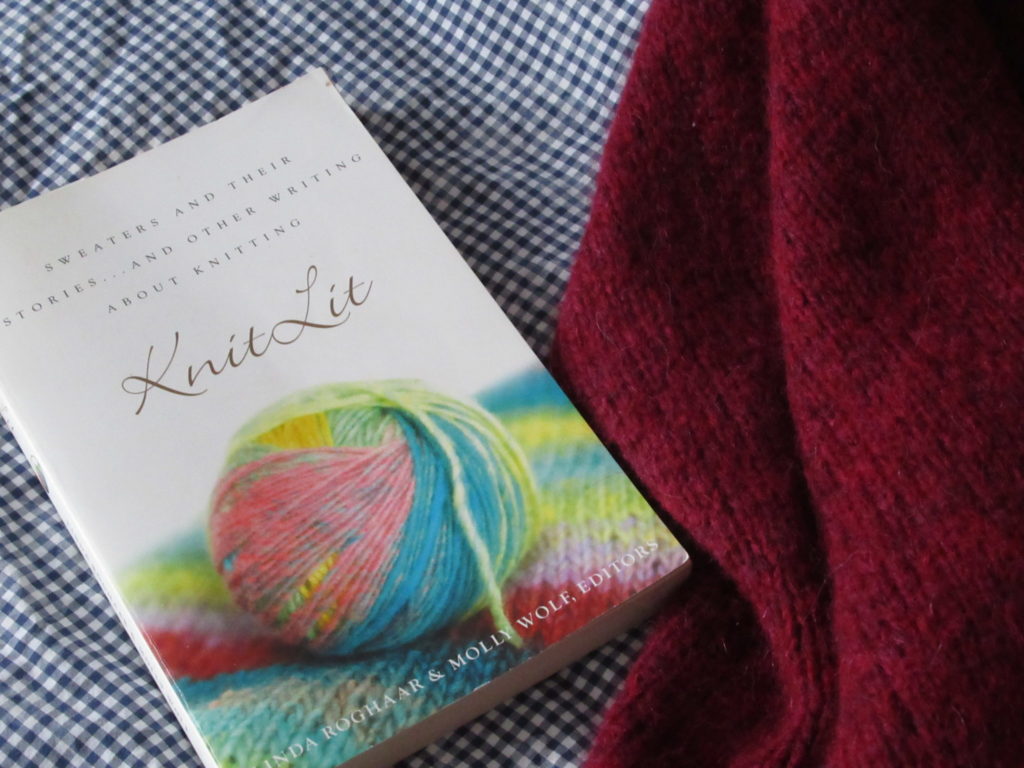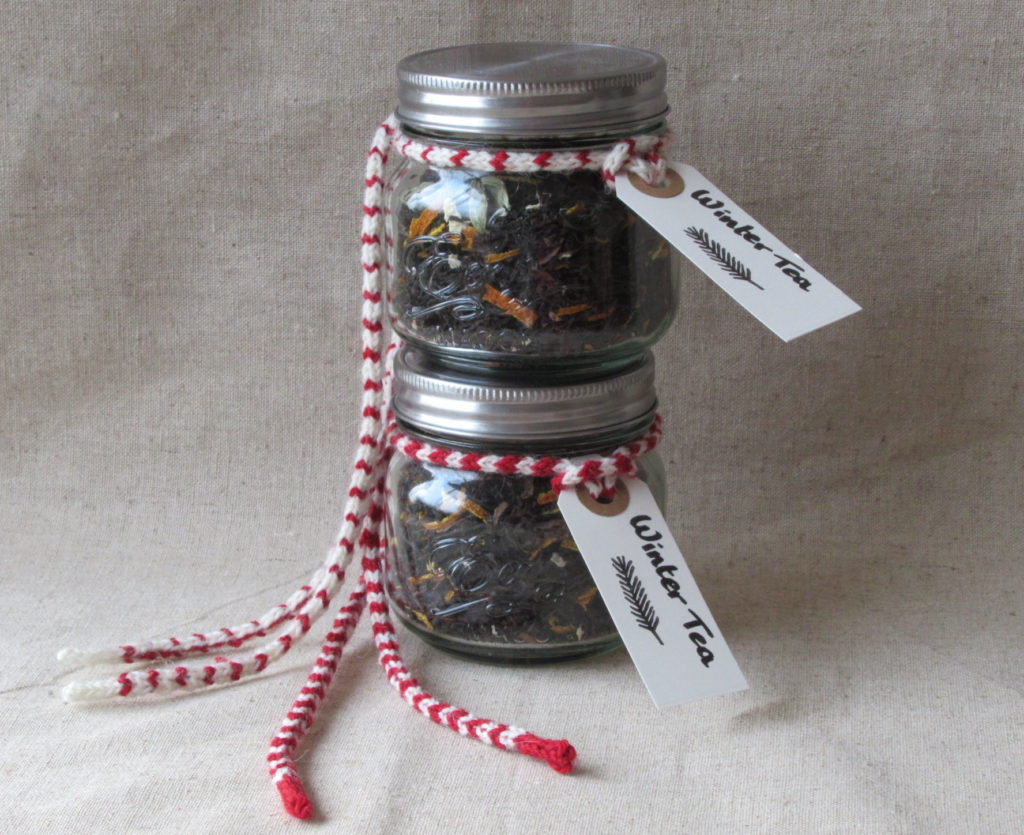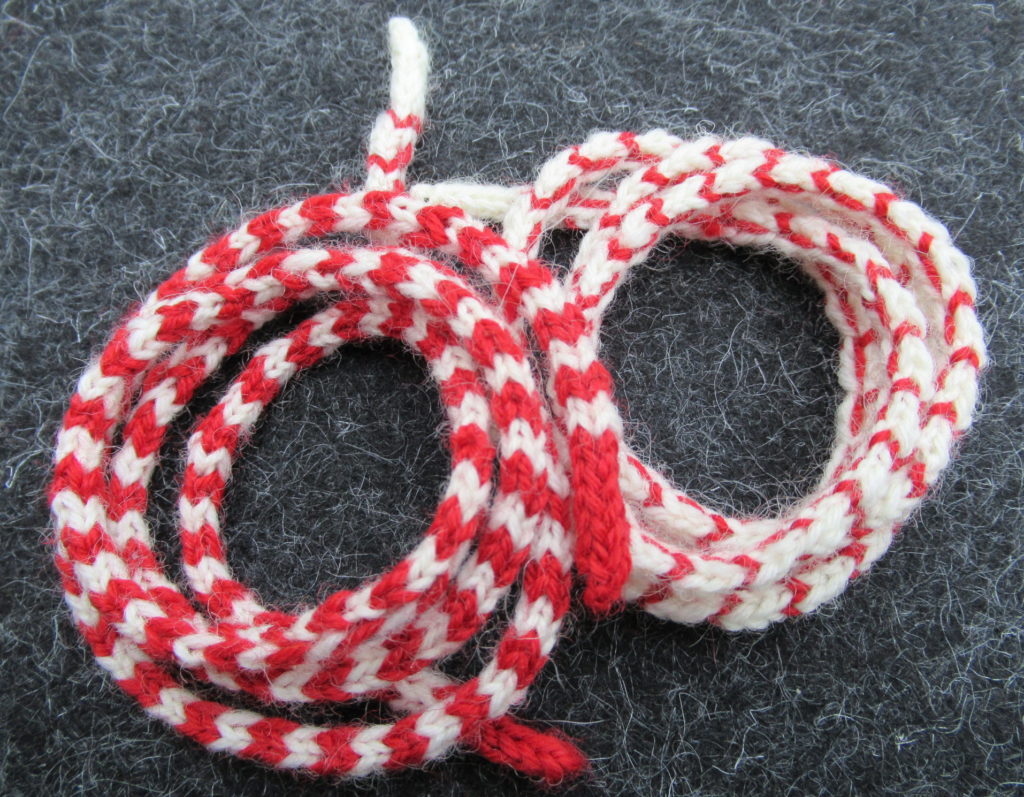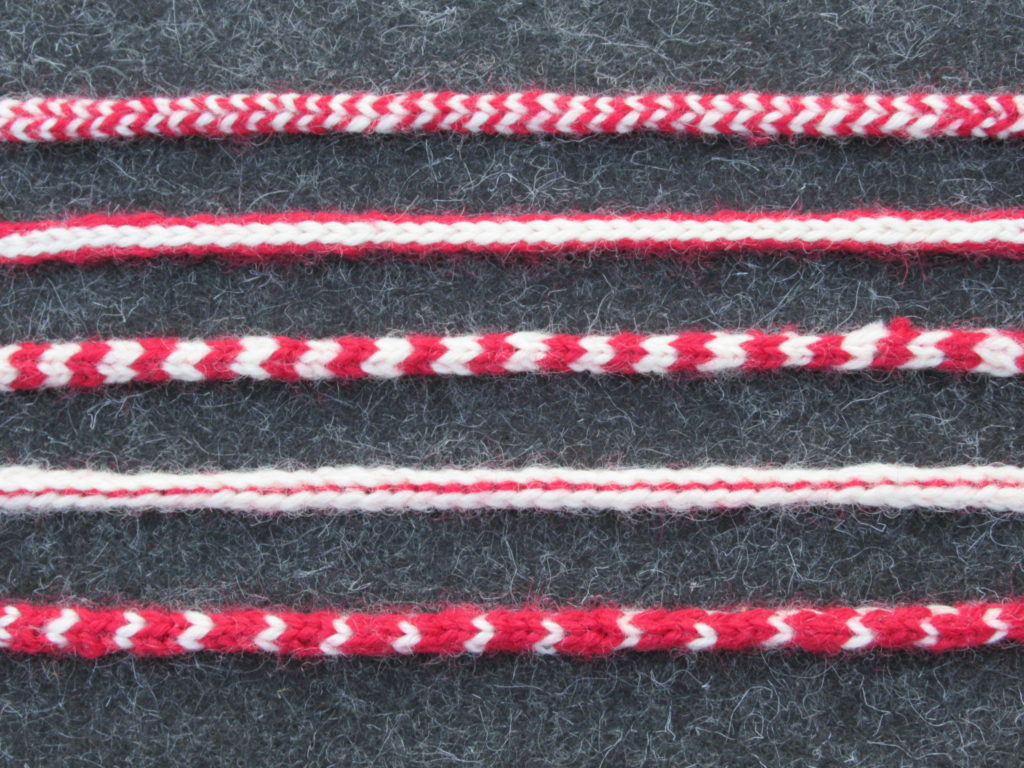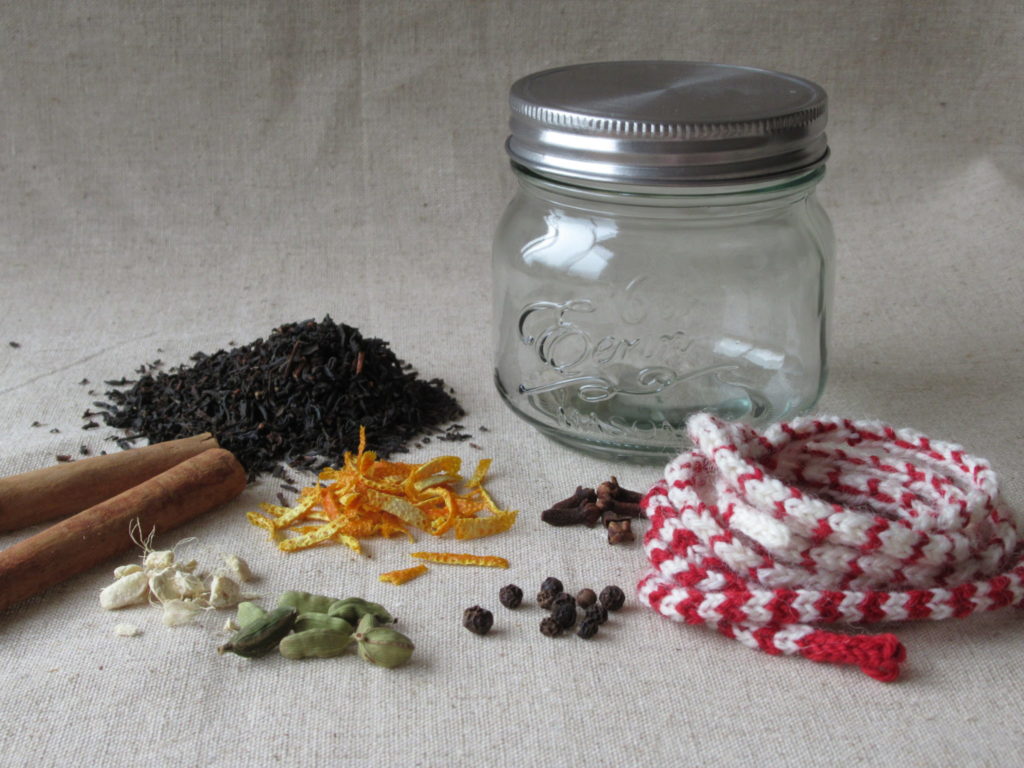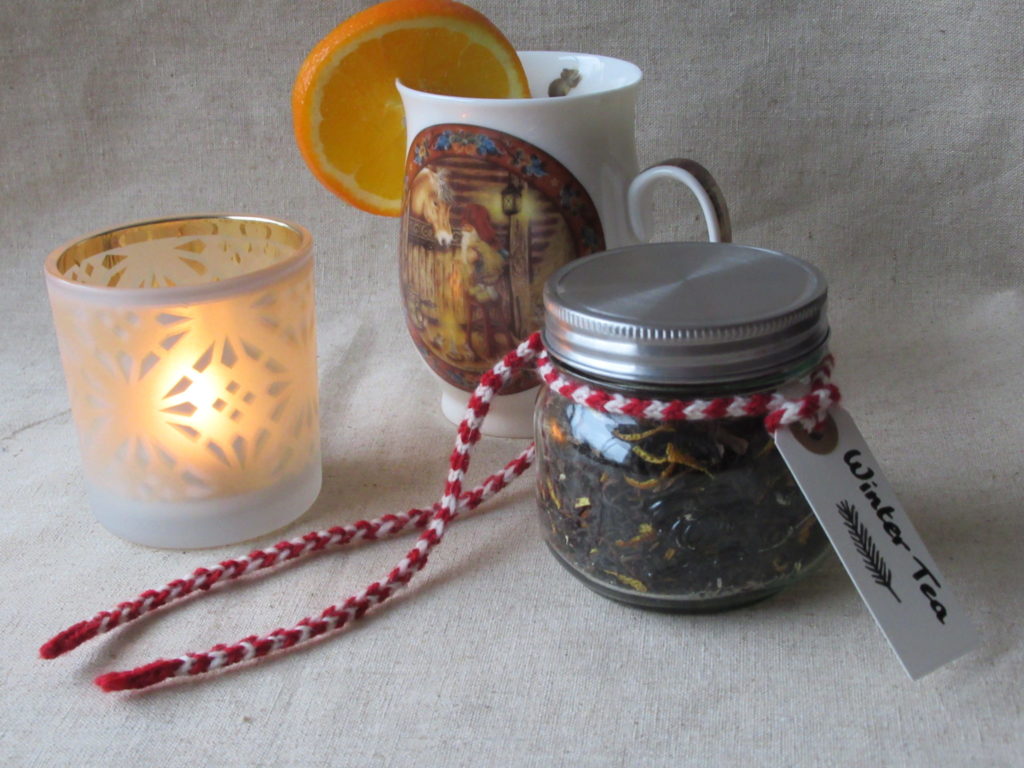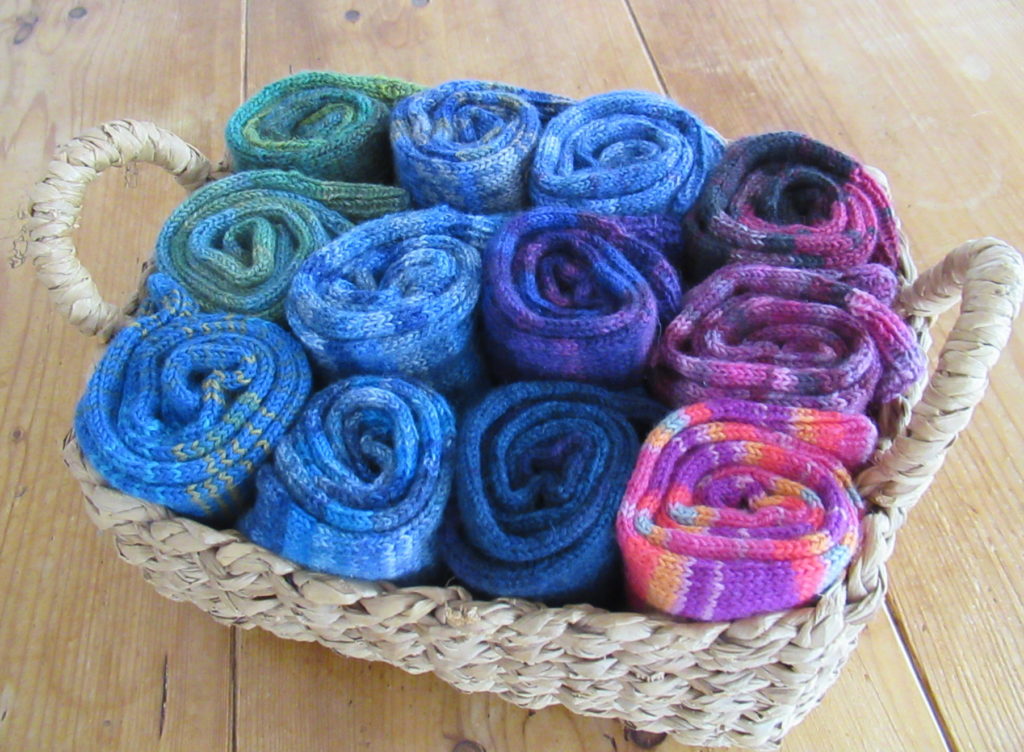
Over the years, our front garden has become a bit of a mess. Some conifers and shrubs that started out as cute little things, have become unwieldy monsters. We could live with that. In a busy life, the garden doesn’t always get top priority, and it’s impossible to have everything perfect all the time. But now that several trees and some plants have died after two very hot and dry summers, it’s high time to take action.
So we’ve taken this week off for a big overhaul. Fortunately we have some help with the planning and the heavy lifting.
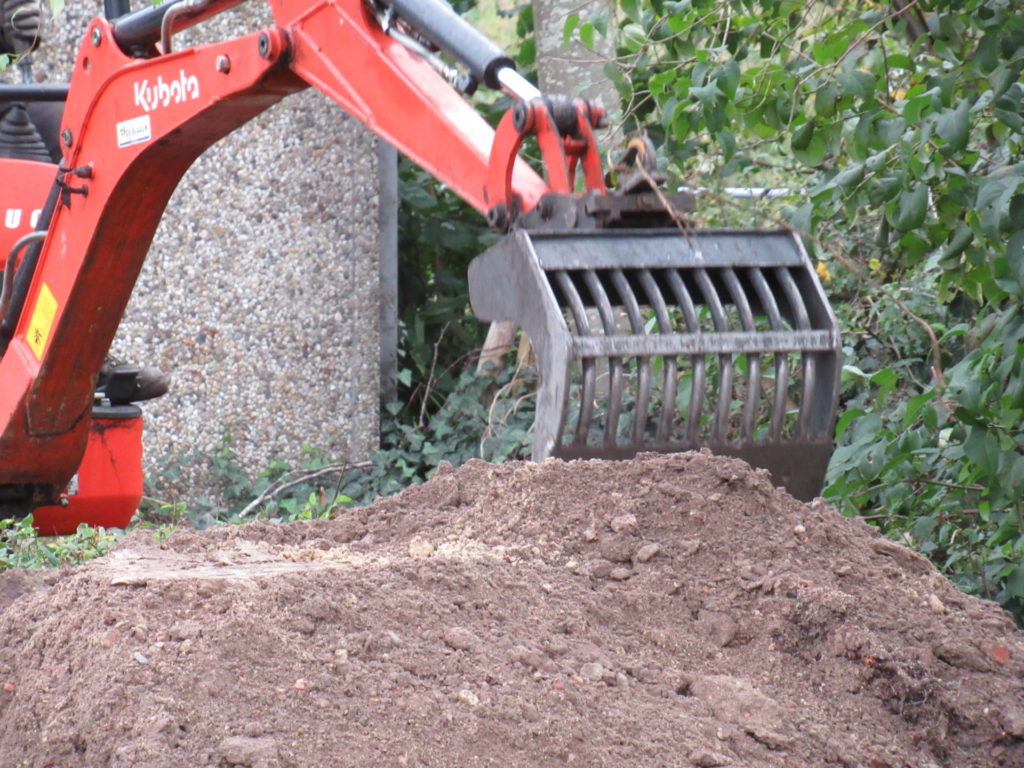
(This may make it look as if we have a huge estate. We don’t, but this is the only way to dig out the tree stumps.)
Because the garden work comes first this week, I’m keeping everything else as simple as possible, including our meals. Soup is ideal for weeks like these. One of my all-time favourites is mushroom soup, and I’ll share my recipe with you here.
I could have used these shaggy inkcaps, but left them in place.
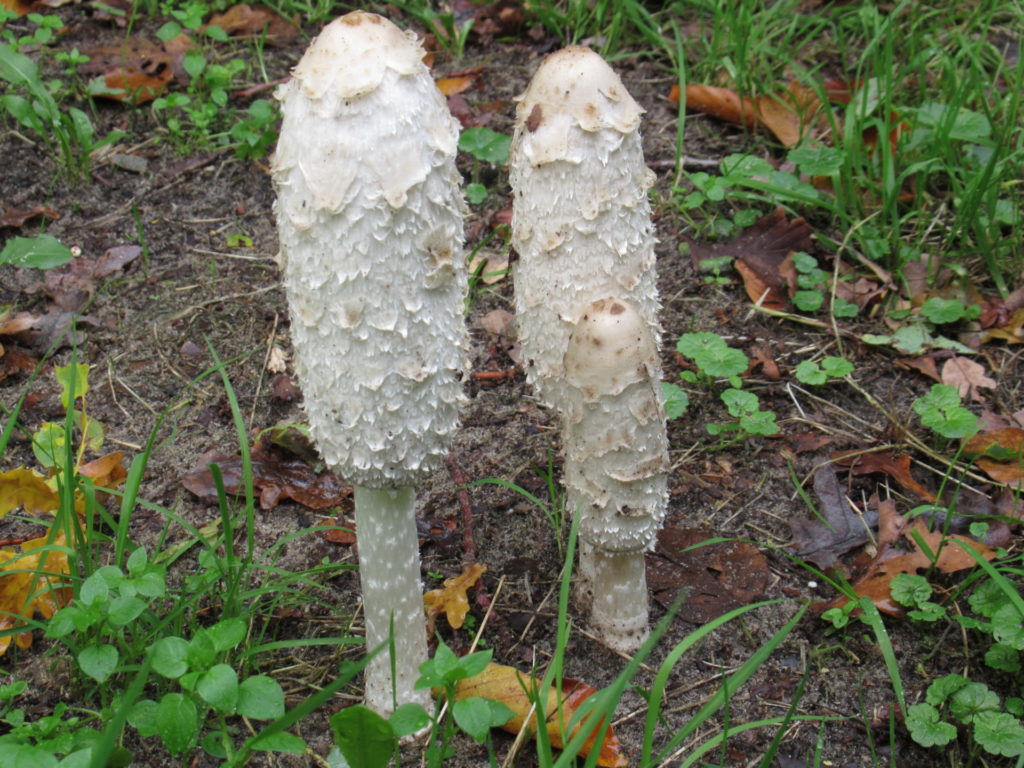
Although I know these are edible, I don’t feel very comfortable eating wild mushrooms. So I bought a mixture of mushrooms from the supermarket instead. If you can’t get a variety, any old mushrooms will do. White button mushrooms, chestnut mushrooms, flat caps, whatever is available is fine.
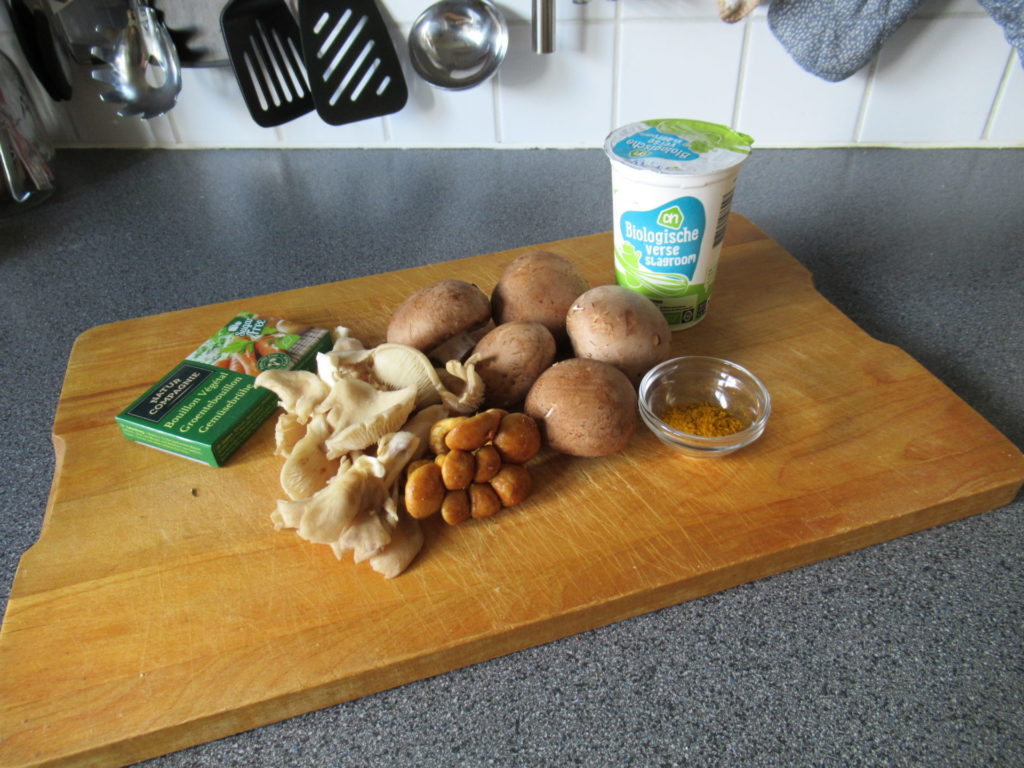
Simple Mushroom Soup
Serves 6 as a starter or 3 as a main course
Ingredients
- 250 g mushrooms, chopped or sliced
- 1 onion, finely chopped
- 1 tsp mild curry powder
- 1 tbsp butter or oil
- 2 vegetable stock cubes
- 750 ml water
- 250 ml cream
Method
- Sauté the onion in the oil or butter over medium heat until soft.
- Add the mushrooms and cook for a further 5 minutes.
- Stir in the curry powder and sauté for about 1 minute, until it releases its fragrance.
- Pour in the water, add the stock cubes and bring to the boil.
- Turn down the heat and leave to simmer with the lid on for 15 minutes, stirring now and then.
- Add the cream and heat through gently.
Ladle into bowls and serve with some bread and a salad for a complete main course.
Enjoy!
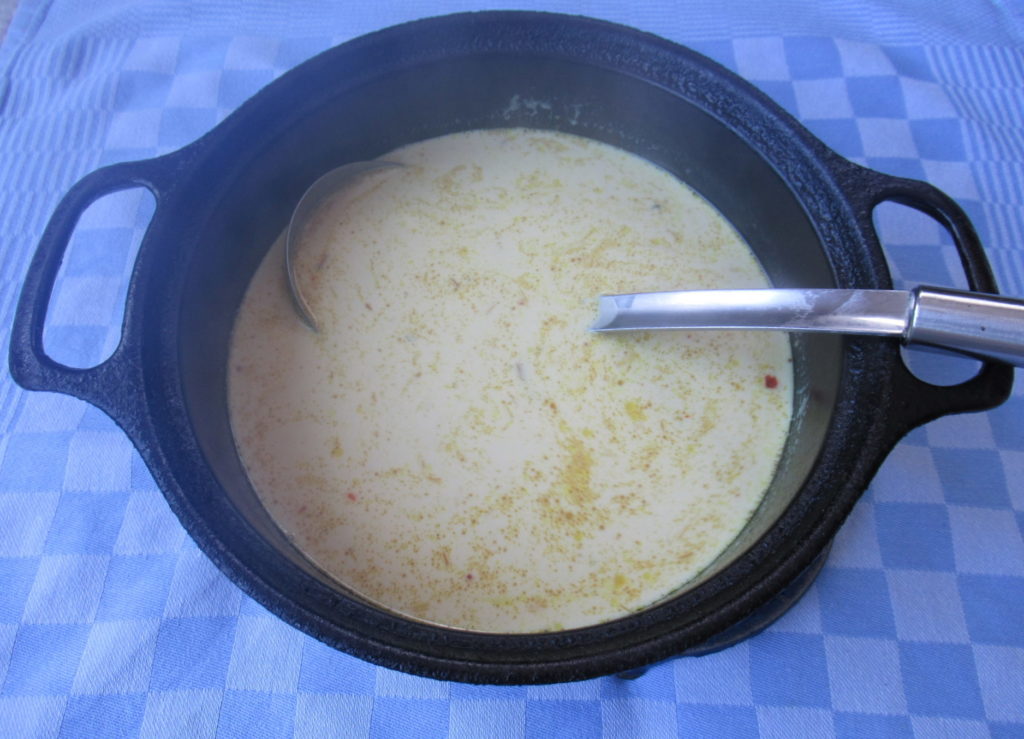
Taking these pictures has taught me that food photography is not as easy as it looks. When I take pictures of things I’ve knit and am not happy with the result, I can always do them again. But with food, well, if you’re not happy with the photos, you don’t get another try because the food is gone.
With the photo above, I wanted to show that the soup is steaming hot, but it just looks hazy. And the mushrooms have all sunk to the bottom of the pan. I can only hope that it still looks tasty enough anyway.
One of my husband’s hobbies is baking bread, and he baked these beauties. We ate some straightaway and put the rest in the freezer.
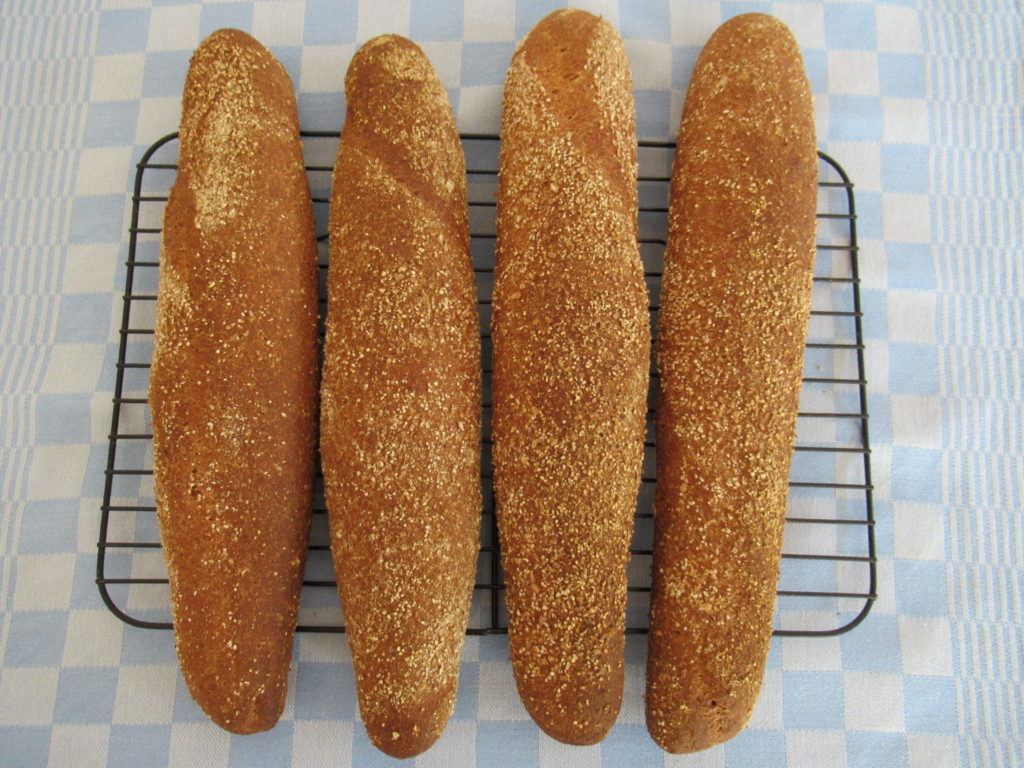
What with all the physical work and fresh air, I’m rather drowsy in the evenings. All I have energy for is writing a blog post, bit by bit, and some simple knitting. For me, socks are the ultimate simple knits.
I’ve just started some from a yarn that will make an identical pair. This kind of yarn is sold under names like ‘pairfect’, ‘perfect pair’, or something with ‘twin’ in the name. Some of these yarns work with a starter thread.
In this case, the neon green thread in the photo below is the starter thread. This is pulled from the centre of the ball until you get to the first bit of yarn in a ‘normal’ colour. Cast on the required number of stitches, then knit, knit, knit stripes until you come to a solid bit. Then start the heel (heel and foot are knit in solid blue in this case), and when you get to the toe, stripes appear from the inside of the ball again like magic.
For the second sock, pull the yarn from the inside of the ball again until you come to the end of the next starter thread and start knitting again. It’s really clever how this yarn has been dyed.
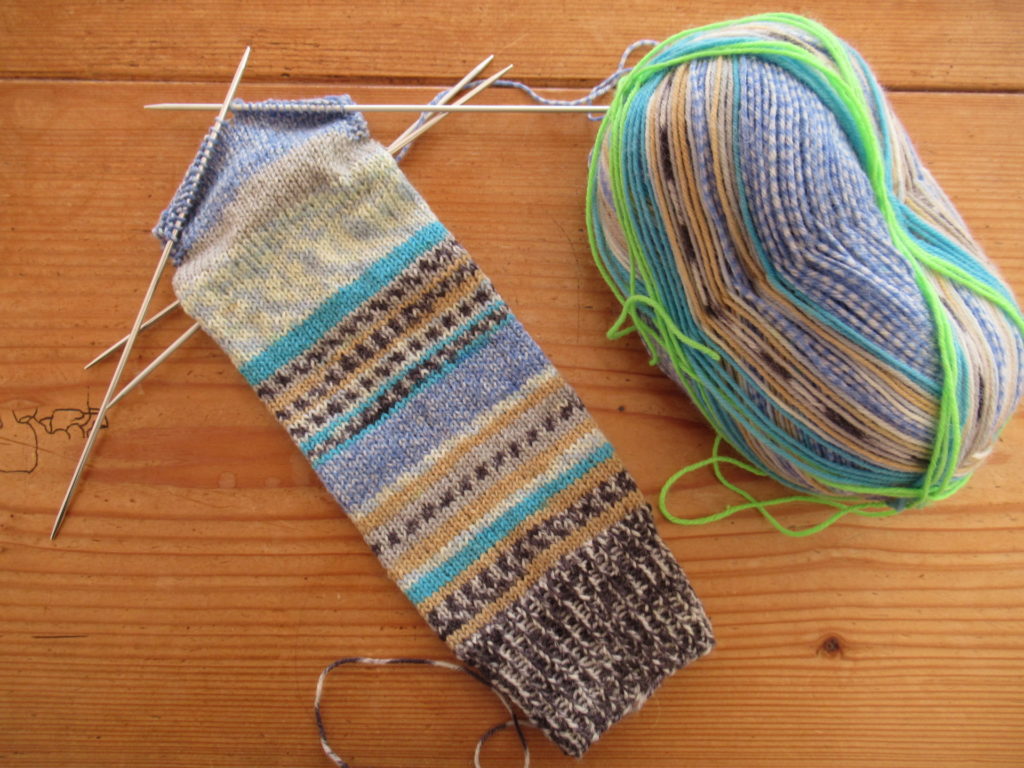
I’ve knit many, many pairs of socks over the years. I always have a sock on the needles. Sometimes a pair is finished in a week, sometimes it takes a lot longer. It depends on how much time I have, and what other knitting projects I’m working on, but there’s no hurry.
I like wearing them myself, but also give many away. They make welcome gifts. Sometimes I choose yarn specifically for a certain person. But often, I just choose yarns and colours that I like, and when the socks are finished, I look at them and ask them, ‘Now who would like to wear you, do you think?’
